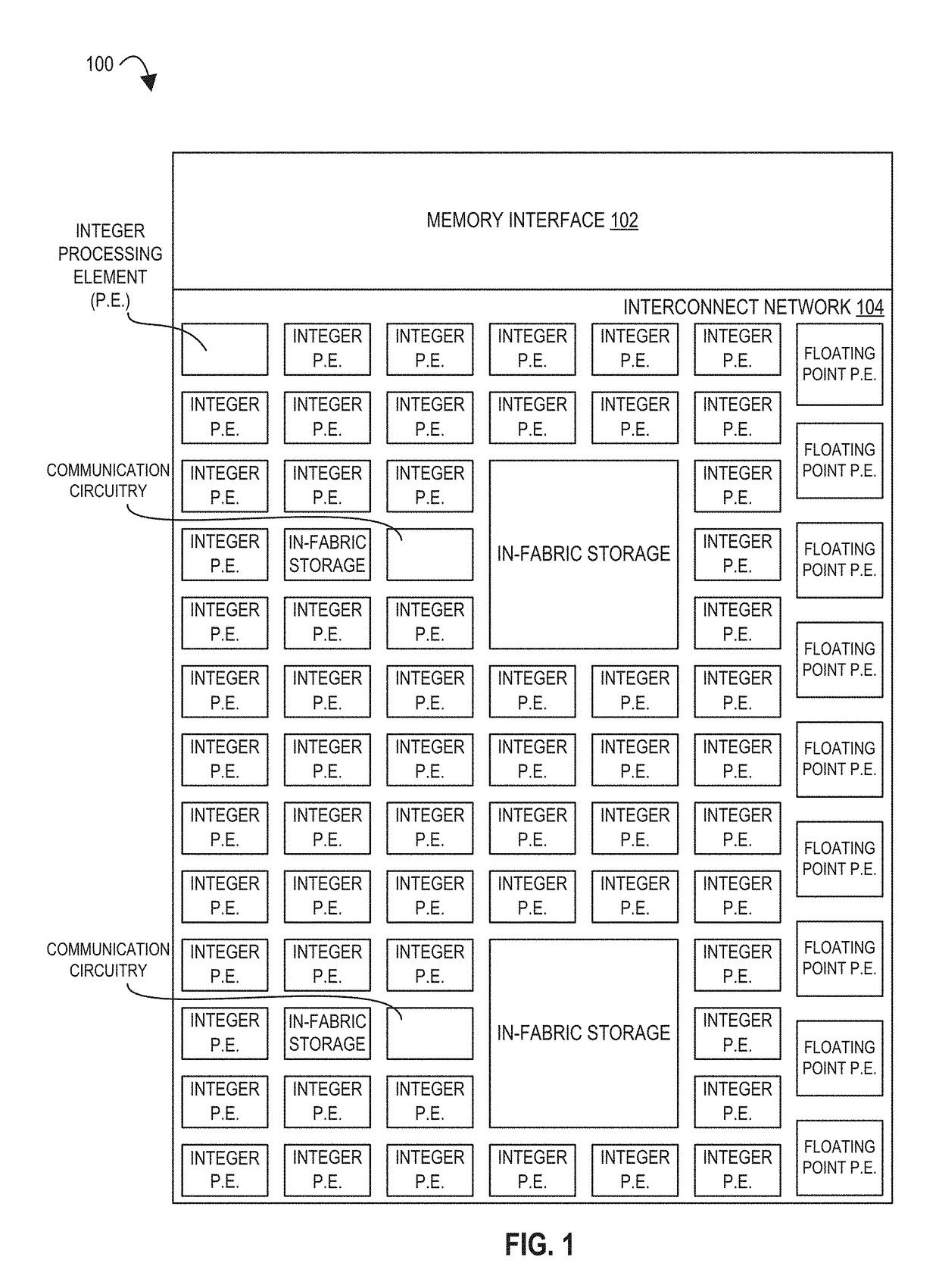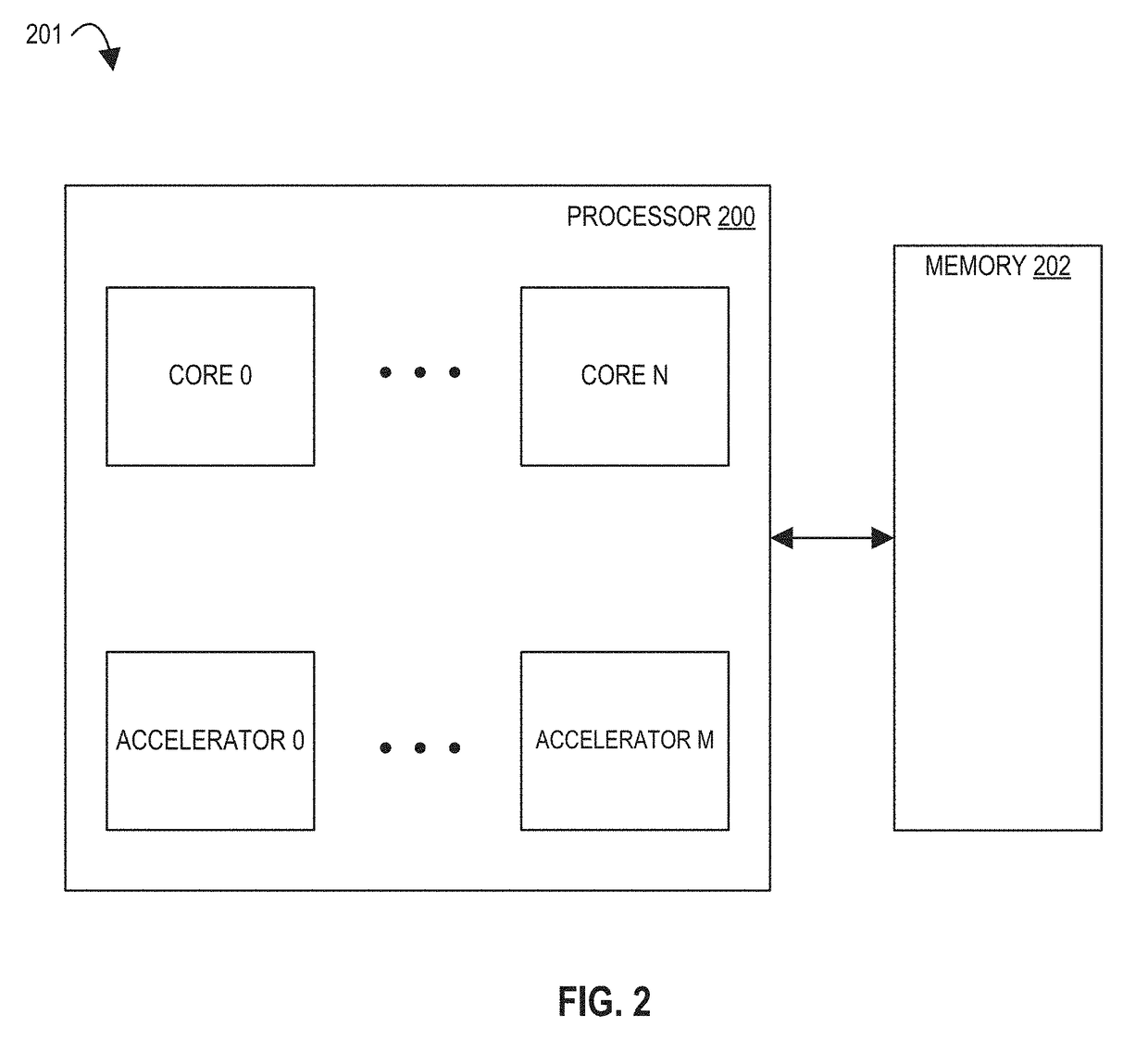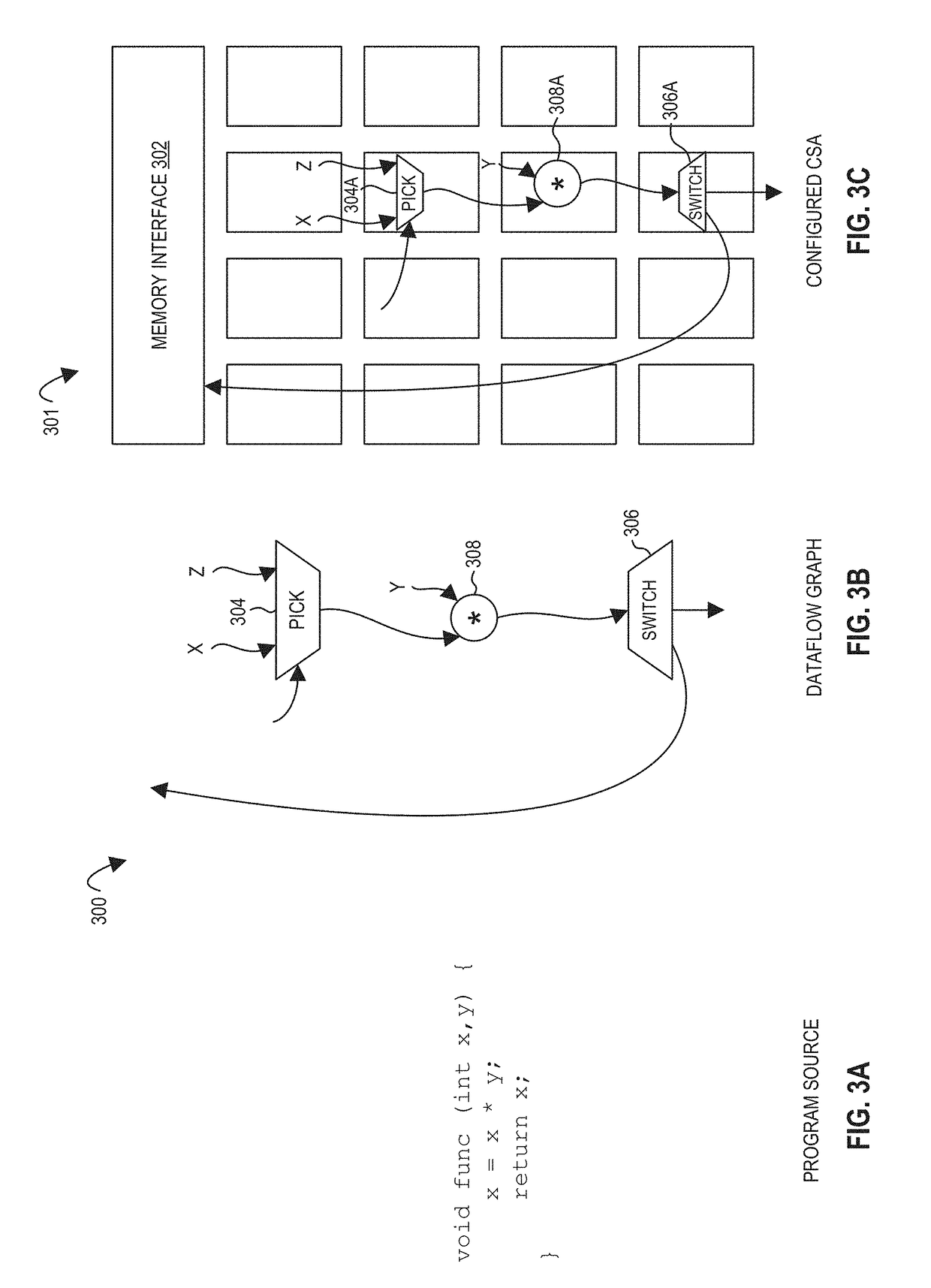However, simultaneously improving the performance and energy efficiency of program execution with classical von Neumann architectures has become difficult: out-of-
order scheduling, simultaneous multi-threading, complex register files, and other structures provide performance, but at
high energy cost.
However, enabling real
software, especially programs written in legacy sequential languages, requires significant attention to
interfacing with memory.
However, embodiments of the CSA have no notion of instruction or instruction-based program ordering as defined by a
program counter.
Exceptions in a CSA may generally be caused by the same events that cause exceptions in processors, such as illegal operator arguments or reliability, availability, and serviceability (RAS) events.
For example, in spatial accelerators composed of small processing elements (PEs), communications latency and bandwidth may be critical to overall program performance.
However, spatial programs may not require any ordering for correct operation, or may self-order requests and responses outside of the memory subsystem.
On complex memory subsystems with caches or banks, this is not the most efficient approach.
This greedy approach may result in unfairness among the clients of the RAF which, in turn, may degrade the performance of the accelerator fabric.
Greedy allocation handles bursty requests well, since a single
client can theoretically obtain all the buffering in the RAF.
However, the policy may experience significant performance degradation in the presence of long-latency cache misses.
This yields simplicity, but permits no
programmer configuration.
However, the policy does not cope with dynamic behaviors such as large request bursts from a single
client.
Although runtime services in a CSA may be critical, they may be infrequent relative to user-level computation.
However, channels involving unconfigured PEs may be disabled by the
microarchitecture, e.g., preventing any undefined operations from occurring.
However, when the boundary bit is in a second state (e.g., high or set), it may inhibit normal operation of the network crossing in a way that blocks communication across the boundary (except during privileged configuration, as described below).
However, by nature, exceptions are rare and insensitive to latency and bandwidth.
Packets in the local exception network may be extremely small.
While a program written in a high-level
programming language designed specifically for the CSA might achieve maximal performance and / or energy efficiency, the adoption of new high-level languages or
programming frameworks may be slow and limited in practice because of the difficulty of converting existing code bases.
It may not be correct to simply connect channel a directly to the true path, because in the cases where execution actually takes the
false path, this value of “a” will be left over in the graph, leading to incorrect value of a for the next execution of the function.
In contrast, von Neumann architectures are multiplexed, resulting in large numbers of bit transitions.
In contrast, von Neumann-style cores typically optimize for one style of parallelism, carefully chosen by the architects, resulting in a failure to capture all important application kernels.
Were a time-multiplexed approach used, much of this energy savings may be lost.
The previous
disadvantage of configuration is that it was a coarse-grained step with a potentially large latency, which places an under-bound on the size of program that can be accelerated in the fabric due to the cost of context switching.
As a result, configuration
throughput is approximately halved.
In embodiments in which the forward
data path and backwards control path are separately configurable, a security
vulnerability may exist if malicious code configures its
data path in one direction and its control path in another direction, in that the
data path may arise from a different partition, while the control path may arise from the local partition.
Thus, it may be difficult for a
signal to arrive at a distant CFE within a short
clock cycle.
For example, when a CFE is in an unconfigured state, it may claim that its input buffers are full, and that its output is invalid.
Thus, the configuration state may be vulnerable to soft errors.
As a result, extraction
throughput is approximately halved.
Thus, it may be difficult for a
signal to arrive at a distant EFE within a short
clock cycle.
In an embodiment where the LEC writes extracted data to memory (for example, for post-processing, e.g., in software), it may be subject to limited
memory bandwidth.
Supercomputing at the ExaFLOP scale may be a challenge in high-
performance computing, a challenge which is not likely to be met by conventional von Neumann architectures.
This converted code is not likely to be the same as the alternative instruction set binary code 4610 because an instruction converter capable of this is difficult to make; however, the converted code will accomplish the general operation and be made up of instructions from the alternative instruction set.
 Login to View More
Login to View More  Login to View More
Login to View More 


